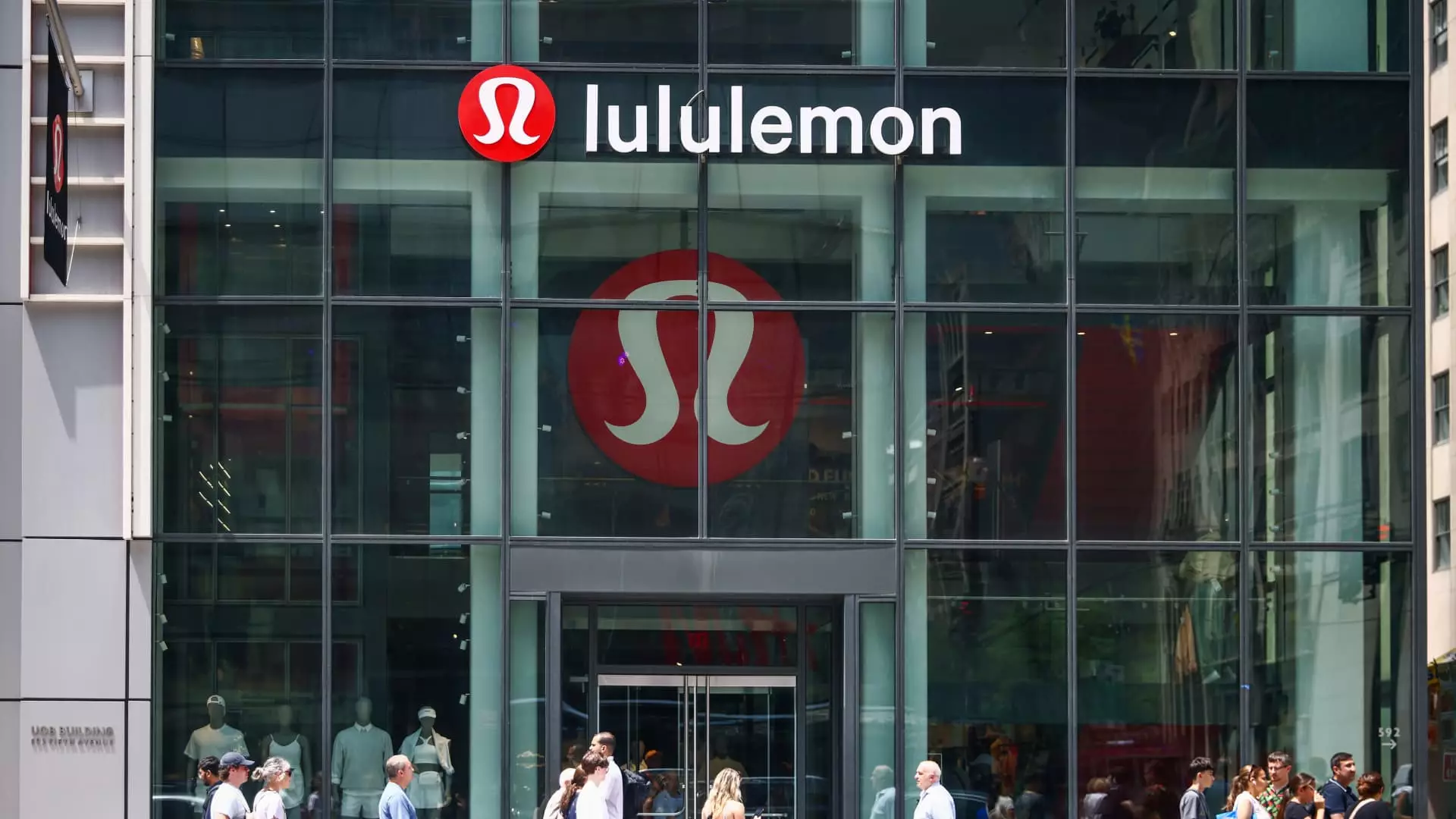Lululemon Athletica Inc., a revered brand in the athletic apparel industry, recently showcased robust financial numbers for its fiscal fourth quarter. The company announced earnings of $6.14 per share, surpassing Wall Street’s expectations of $5.85. Alongside this, revenue hit $3.61 billion, a favorable increase from $3.21 billion in the previous year. However, despite these seemingly positive figures, the market reacted negatively. The stock plummeted by over 6% in after-hours trading, reflecting a growing skepticism among investors about the company’s future performance.
One must wonder: how can a company that delivers better-than-expected earnings experience such a downturn? The answer lies in Lululemon’s tentative projections for fiscal 2025. While the overall revenue for fiscal 2024 showed a commendable increase—up to $10.59 billion from $9.62 billion—the outlook for the next fiscal year failed to inspire confidence. The expected revenue of $11.15 billion to $11.30 billion for 2025 did not meet analyst forecasts, which were pegged at $11.31 billion.
E-commerce and Sales: A Mixed Bag
A deeper dive into Lululemon’s sales data reveals a concerning trend. Comparable sales, a key performance metric that reflects the revenue generated from stores open for over a year, only rose by 3% year-over-year, trailing behind the anticipated 5.1%. In a retail landscape where agile e-commerce strategies are paramount, a stagnation in comparable sales in the Americas, contrasted with a staggering 20% growth internationally, paints a complex picture.
This disparity prompts questions about how well Lululemon is leveraging its strengths in the North American market. Is the brand innovating quickly enough, or is it losing touch with a home audience captivated by other rising brands? The insipid performance in the Americas should signal a wake-up call; complacency cannot take root if Lululemon wants to continue its legacy in an increasingly competitive sector.
Forward Guidance: A Double-Edged Sword
Perhaps the most contentious aspect of Lululemon’s recent fiscal results is its forward guidance. Analysts who previously held high hopes for Lululemon must now reckon with more subdued expectations. The lack of a bullish outlook could be a symptom of broader economic uncertainties, particularly as consumer spending habits shift. Wall Street thrives on momentum, and a lack of optimism can swiftly tarnish a brand’s reputation, leading to decreased investor confidence.
Moreover, many analysts had hoped Lululemon would leverage its premium branding to ride the wave of post-pandemic consumer spending. Instead, these underwhelming projections might suggest that Lululemon’s quest for status as a luxury brand could be encountering headwinds.
In a sector driven by cultural trends and fast-evolving consumer preferences, Lululemon must prioritize agility and innovation in its product offerings. It may be time to embrace a more aggressive strategy that can resonate not only with loyal customers but also with the new clientele that seeks value and authenticity. The clock is ticking for Lululemon, and without decisive action, the bullish narrative that once buoyed its stock could become a distant memory.

